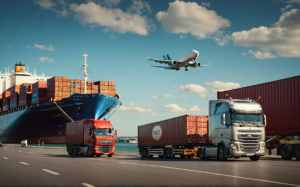The instability in the supply chain is causing several headaches for workers and customers. Meanwhile, business leaders face shortages of supplies and skilled labor, not to mention lockdowns. To protect themselves, they need to develop supply chain resilience strategies.
How much the supply chain supports has become one of the most crucial questions. It´s needed to find the points of weakness and solve them as quickly as possible.
Currently, the main problems named by supply chain experts are cyber risk, port delays, truck driver shortages, and natural disasters.
The new reality that comes with the pandemic seems to have some aspects that will remain even with the extinction of the virus. In the supply chain, the continuity of high demand and the need to reduce lead times are two certainties.
To get resilience, large companies already use diversification in the supply chain, vertical integration, an increase in buffer stocks. Likewise, having reliable ports and investing in skilled workers loyal to the company are also safe ways to work in this situation.
Ensuring resilience in the supply chain has never been more necessary.
Our dependence on technology makes cybercrime increasingly threatening. With reports like the massive information leak in Brazil or the attack on the American colonial pipeline in May, the vulnerability of some countries and sectors becomes glaring. In addition, the coming of the 5 g promises to further intensify this relationship of dependence.
To sum up, goods from the sea continue to pile up faster than workers can move them. Therefore, delays in the ports are the cause of billions of losses and do not seem to have a solution on the way. It is estimated that $24 billion worth of goods are stuck in California
The shortage of truck drivers is a major cause of disruptions in the supply chain. Many countries do not have the personnel needed to transport backlogged goods. There are tens of thousands of job vacancies lying idle all over the world.
This new demand brings two transformations. The creation of autonomous vehicles and the reduction of the idea needed to drive interstadial trucks.
Moreover, global warming and the rampant pollution in some nations make old problems intensify. Blizzards, floods, dry rivers, and storms are becoming bigger and bigger threats.
The solution
The stress of the global supply chain is a reality, and to survive it you need to have the best tools at your disposal. Even in turbulence like this, the Grydd operating system is designed to guarantee resilience.


















